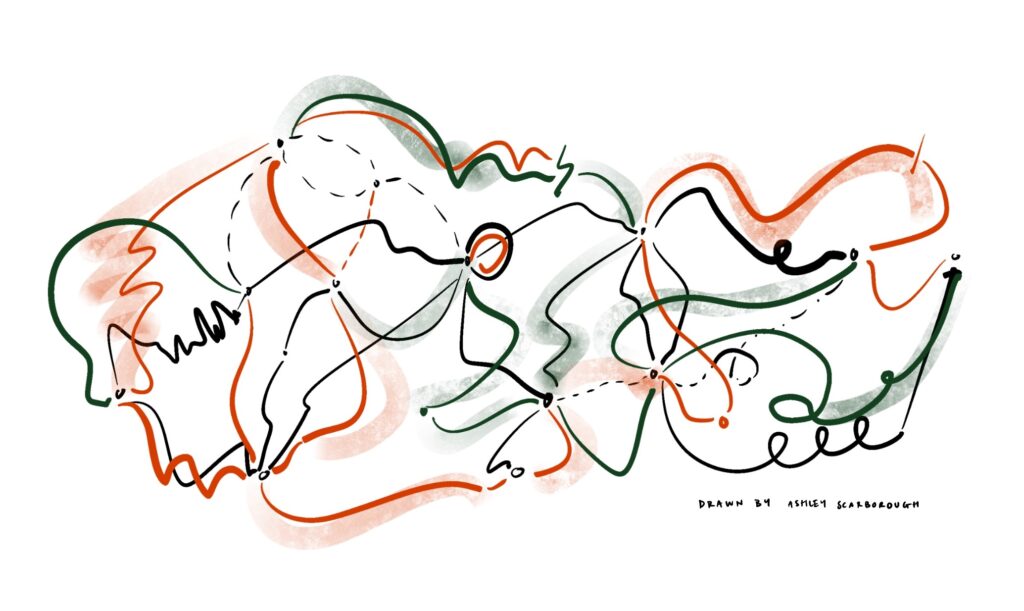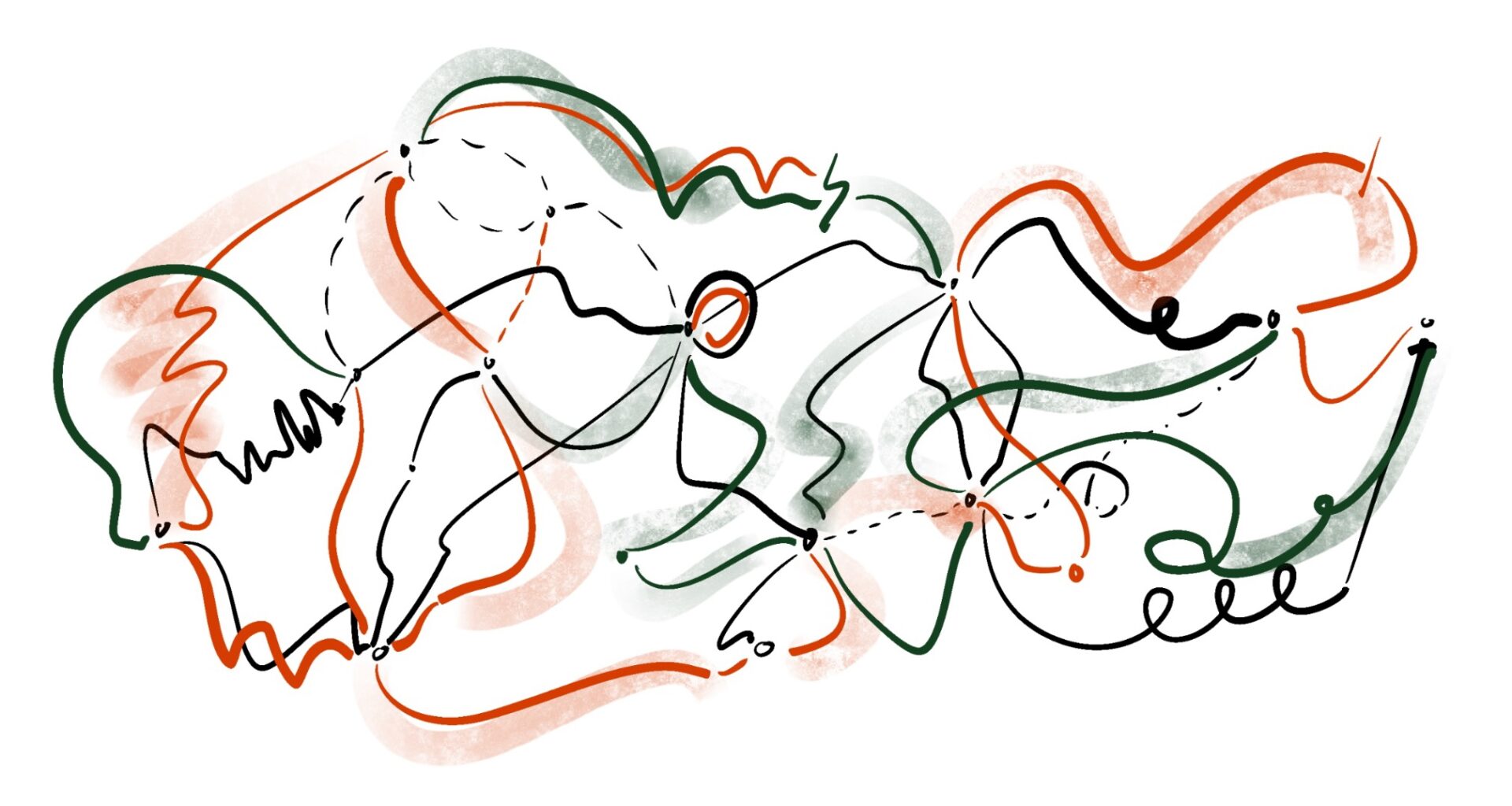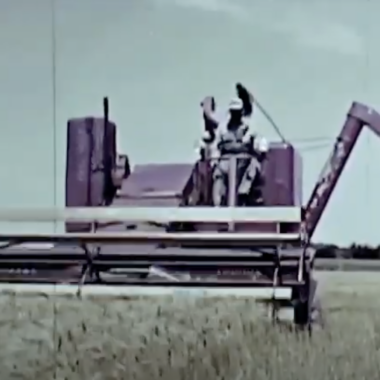Design is often perceived to be about solutions related to aesthetics and objects, but the profession, like many others, is undergoing a perceptual and practical shift towards multi-solving within dynamic systems, which is more realistic but also more complicated. A conversation with Systems Change Designer Ashley Scarborough about how she redesigned her professional path and found food systems as her medium.
The Common Table: What do you call yourself, and how do you describe what you do?
Ashley Scarborough: I often don’t feel comfortable labelling myself because it feels so “in a box” when in reality, what I do is always in flux. At the moment, I’m calling myself a System Change Designer, because that covers what I’m trying to achieve with my work, i.e. “system change”, and the process I use to do that, which is “design”.

I work to understand the complexities of the systems around us, including food systems, to find meaningful ways to shift towards more regenerative futures that care for both people and the planet. This often involves systems research and mapping, making the invisible dynamics of the world more visible and therefore making it easier to intervene. Recently, for example, with the team at Reimagined Futures, I created systems maps of the European agricultural system and of the global food system.
Additionally, as part of a project I founded called How We Eat, I use food and shared meals as a creative medium, designing experiences for change that support more nature-symbiotic and human-centred futures; experiences that invite people to think differently about the world and what’s possible. I also design and facilitate learning programmes around systems thinking.
The Common Table: What kind of design education did you have?
Ashley Scarborough: I had a very traditional design education, I studied Interior Architecture at Kingston University in London, where I made cardboard models of spaces, learned to sketch and draw architectural drawings, played around with materials, form and colour and generally had a fantastic time channelling my creativity into physical space.

After working in interior architecture professionally for a while, mostly designing retail spaces, I went to the Royal College of Art in London to do a Master’s degree in Product Design. My intention wasn’t to design the best products, but rather to understand how design as a process could be applied to the really sticky, wicked problems I was seeing in the world, and to try to design solutions that had a real impact beyond the design world. This marked the beginning of my fascination with systems and the development of my systems thinking capabilities.
The Common Table: What do you think it was designed to prepare you for?
Ashley Scarborough: I think the interior architecture degree was designed to give me the foundations of design as a process, and through my professional projects, allowed me to deepen my skill set. It gave me the confidence to understand design practice and that designers have unique creative skill sets.
It wasn’t until after I graduated that I understood that a food experience can also be a product.
During my Master’s, I chose a module called Exploring Emergent Futures. It was about preparing us to question what design can be for and challenged us to move beyond design in its traditional sense. It opened my mind to things like the degrowth movement and new economic models, going beyond the circular economy into regeneration, citizen science, designing for civil development and so on. It wasn’t until after I graduated that I understood that a food experience can also be a product.
The Common Table: What do you wish your design education had prepared you for?
Ashley Scarborough: My Master’s was designed to prepare me to not fit in a typical design box. I remember being told: “You’ll be so unique you’ll be unemployable in a normal design company”. At the time, I thought that was cool, but in hindsight, I wasn’t really given guidance on what the other options could be, which meant I was quite overwhelmed by the path I needed to shape for myself.
At the time, I thought that was really cool, but in hindsight, I wasn’t really given guidance on what the other options could be.
I wish it had prepared me to have the confidence to position myself in a non-design situation by understanding the value of designers for the wider world. For example, a designer on the team of an NGO working to transform food systems is a great asset – they can imagine and communicate what a new food system could look like, creating whole worlds with new technologies, new ways of consuming food, and or new ways of growing food. The designer is a natural systemic thinker, making the connections and pulling threads between people, products, technologies, materials, stories and all tangible and intangible pieces of the whole system.
The Common Table: How did you go about shifting your design skill set towards something that equips you better for working in today’s world, and how did food come into it?
Ashley Scarborough: I began questioning how design could contribute well to the world and what could be designed that didn’t exacerbate the problems of capitalism. So I started to design learning experiences in the belief that education is a powerful leverage point for change.

The food aspect came in at this point, because I saw food as a powerful mechanism for storytelling and connection to nature – we mostly eat food several times a day for our whole lives, that’s such a powerful opportunity to shift our relationship to food and nature.
I’ve spent the past seven years since finishing college building a toolbox of systems thinking, design tools and frameworks that allow me to do the system change-oriented work I do now. It’s been quite a winding journey as the field of systems work is still very young, but through programmes like Basecamp from the School of Systems Change, and The Art of Hosting, I’ve expanded my design background into a more “future-fit” skill set for today’s chaotic world.
Some of the tools I use now are: the Iceberg Model, the Multi-level Perspective model, the 3 Horizons Framework, and the Berkana Two Loops model, all of which are ways to understand problems within complex systems and then find leverage points for change.
The Common Table: Classic “Design Thinking” is usually sold as a very linear process: identify the problem > research it > design a solution. But if you are thinking in a contextual way and work with the world from the perspective of integrated systems rather than problems and objects, it gets a lot messier and more complex. There is no obvious beginning and end, no obvious solution, is there? What’s different about working that way?
The overall aim is to uncover root causes of the events we see on the surface, to look at the cause and effects of actions, and the interconnectedness of how everything and everyone interacts.
Ashley Scarborough: System practitioners tend to take a broader, multi-layered approach to understanding the problem dynamics, rather than analysing what is on the surface or just one layer below. The overall aim is to uncover root causes of the events we see on the surface, to look at the cause and effects of actions, and the interconnectedness of how everything and everyone interacts. One type of system mapping I do, called Causal Loop Diagramming, is a way to achieve this understanding of a system. It’s made up of feedback loops that show how the cause of a change in a variable in the system (e.g farmers’ financial autonomy, use of pesticides, consumption of regenerative produce or transparency of supply chain) can affect other variables.
When developing solutions, the process differs again from typical design thinking because a) there is no single solution, and b) we don’t assume that the implementation of solutions will make the exact changes we hope for or anticipate. Because we are dealing with highly complex systems (nested within larger, more complex systems), it’s impossible to know all the consequences of interventions. Instead, it is a process of studying how change happens over time in relation to interventions, it’s more of a circular, or spiral-like process that aims to iteratively learn, adapt, redesign and monitor how the system is changing so that the designed interventions actually respond to reality.
System change practitioners often say that our role is about creating the enabling conditions for change to happen.
For any systems transformation work, there’s no silver bullet, no single solution that fixes everything, it’s madness to think so (finger pointing at tech-bros), but rather an ecosystem of multi-layered interventions are needed, some that are a short term stepping stone, and some that intervene at more large long term scale e.g policy level. System change practitioners often say that our role is about creating the enabling conditions for change to happen.

The Common Table: If a client chooses to work with a systems change designer, what would be different about the approach and process for them?
Ashley Scarborough: Firstly, it would be a much longer process than a typical design process. Secondly, it would be collaborative. In my experience, the true value lies in the shift in perspective that participants gain through the work. It’s mindset-shifting and capacity-building work packaged in a different way. As the systems practitioner leads the client team through the research process, asking deeper questions, searching for interconnections, exploring wider and hidden root causes and encouraging the same from the client, the client starts to think systemically too. The shift from linear thinking to systemic, interconnected thinking is really valuable.
In my experience, the true value lies in the shift in perspective that participants gain through the work.
The Common Table: What advice would you give to designers starting their education or career?
Ashley Scarborough: Design can have so much influence on the fundamental structure of how the world works, as well as the behaviours and mindsets and relationships to others and nature. It can be so powerful to think beyond a product or aesthetic to how design can help people live meaningful lives, and how design can protect nature and work with it. Here’s a question to think about: Imagine yourself in 2050, what positive influence have you had on people and nature through your unique design skills? What future have you enabled?
The Common Table: What advice would you give a client about including a designer in their team or on their project?
Ashley Scarborough: Designers don’t always think laterally, and they may not learn from reading reports or work in a structure that fits into a box but they bring so much creativity with big-picture ideas and often see things others don’t, which means that are fantastic contributors to teams in their ability to imagine what the future could look like, and working out ways to get there.
Ashley Scarborough is a system change designer and strategist. She uses system thinking frameworks to co-develop an understanding of complex systems with teammates and clients, and uses design thinking methodology to develop creative strategies to solve these systemic problems. She is also the founder of How We Eat, an experiential learning initiative that uses food to explore regenerative principles and systems thinking with leaders.
Cover illustration: “How Does the World Work?” © Ashley Scarborough






